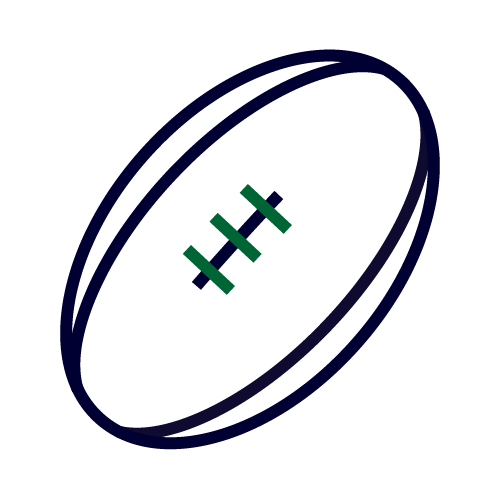Mature-aged Sport
PARTICIPATION - 2022
- Australian Capital Territory - 36,000 (34%)
- New South Wales - 754,000 (31%)
- *Northern Territory - 20,000 (35%)
- Queensland - 439,000 (30%)
- South Australia - 151,000 (26%)
- Tasmania - 53,000 (28%)
- Victoria - 591,000 (32%)
- Western Australia - 243,000 (33%)
*estimate has a relative margin of error between 50% and 100% and should be used with caution’ for Northern Territory

Most popular sport-related activities with estimated participants 13
- Associations between physical activity, medical costs and hospitalisations in older Australian women: Results from the Australian Longitudinal Study on Women’s Health, G.M.E.E. (Geeske) Peeters, et.al., Journal of Science and Medicine in Sport, Volume 21(6), pp.604-608, (2018).
- Preventing dementia by promoting physical activity and the long-term impact on health and social care expenditures, van Baal P, Hoogendoom M and Fischer A, Preventive Medicine, Volume 85, pp.78-83, (2016).
- Healthy Active Aging, Heat Foundation Australia, (accessed 8 December 2023).
- Active and Healthy Ageing through Sport van Uffelen J, Jenkin C, Westerbeek H, Biddle S and Eime R, Institute of Sport, Exercise and Active Living (ISEAL), Victoria University, Report prepared for the Australian Sports Commission (2015).
- Are they ‘worth their weight in gold’? Sport for older adults: benefits and barriers of their participation for sporting organisations, Jenkin C, Eime R, Westerbeek H, et al., International Journal of Sport Policy and Politics, Volume 8(4), pp.663-680, (2016).
- A systematic review of the psychological and social benefits of participation in sport for adults: informing development of a conceptual model of health through sport, Eime R, Young J, Harvey J, et.al., International Journal of Behavioral Nutrition and Physical Activity, Volume 10 (2013).
- Physical Activity, Aging, and Physiological Function, Harridge S and Lazarus N, Physiology, Volume 32(2), pp.152-161, (2017).
- A life-long approach to physical activity for brain health, Macpherson H, Teo W, Schneider L and Smith A, Frontiers in Aging Neuroscience, Volume 9 (2017).
- National, state and territory population: Population – Australia: Population at 30 June, by sex and single year of age, Aust., from 1971 onwards [data download], Australian Bureau of Statistics, (14 September 2023)
- Population Projections, Australia, 2022-2071, Australian Bureau of Statistics, Stat Data Explorer, (accessed 8 December 2023).
- AusPlay Data Portal: Sport-related participation – frequency of participation, Australian Sports Commission, (accessed 5 December 2023).
- AusPlay Data Portal: Non-playing roles, Australian Sports Commission, (accessed 5 December 2023).
- AusPlay Data Portal: Participation by activity, Australian Sports Commission, (accessed 14 July 2023)
TOPIC FOCUS
Last updated: 25 January 2024
Content disclaimer: See Clearinghouse for Sport disclaimer
IS THIS INFORMATION COMPLETE?
The Clearinghouse for Sport is a sector-wide knowledge sharing initiative, and as such your contributions are encouraged and appreciated. If you would like to suggest a resource, submit a publication, or provide feedback on this topic, please contact us.
Alternatively, if you would like to be kept up to date with research and information published about this topic, please request a research profile setup.





